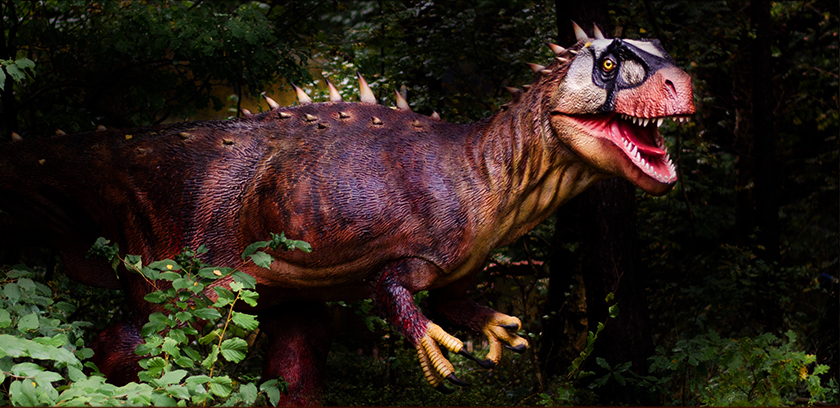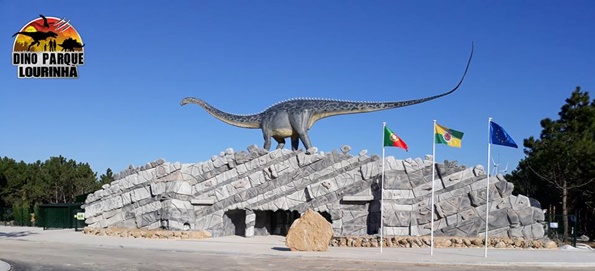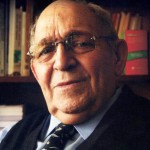 When, a few days ago, I announced the opening of the Dino Park, in Lourinhã, I had 780 “likes”, 928 shares and dozens of Facebook comments, with congratulations, congratulations, words of encouragement and others of thanks.
When, a few days ago, I announced the opening of the Dino Park, in Lourinhã, I had 780 “likes”, 928 shares and dozens of Facebook comments, with congratulations, congratulations, words of encouragement and others of thanks.
Well, in reality, I didn't put a finger in this work, a true merit of the people of Lourinha, which I will only see today at the invitation of their real promoters. I would like to believe that I participated in the launching of the seed that gave birth to it when, I don't know how many years ago, at the invitation of my late friend Horácio Mateus, I participated in a meeting, I believe in the City Council, with him representing GEAL (Ethnology Group and Archeology of Lourinhã), the then president of the Autarchy, the Minister of Science and Technology, Professor Mariano Gago, and Dr. Catarina Vaz Pinto, representing Quaternaire Portugal SA.
But I know the origin of this general feeling that puts me, let's say with humility, at the center of the world of dinosaurs which, for school children (where I've always been and continue talking to students and teachers) made me the "father of dinosaurs” and today, over the years (three decades), the “grandfather” of the same animals.
It all started in 1986, when two finalists for the Degree in Geology at the Faculty of Sciences of Lisbon, Carlos Coke, now a professor at the University of Trás-os-Montes and Alto Douro (UTAD), and Paulo Branquinho, who I lost track of, my friends alumni, discovered a set of about two hundred dinosaur footprints from the Cretaceous (92 to 96 million years old) at the bottom of an abandoned quarry and, at the time, to be used as a dump for rubble and a clandestine dump, in Pego Longo (Sintra municipality) in the immediate vicinity of Carenque (Amadora municipality).
Threatened with destruction by the construction of a highway (CREL), I committed myself, to the limit of my abilities and enthusiasm, as a professional and as a citizen, in its defense, supported by the institutional strength of the National Museum of Natural History that I was then running. It was a struggle for about three years (1990-993), arduous, sometimes hard, against the insensitivity of those who decide.
I wrote and interviewed all the newspapers. Radio gave me a voice and television gave me an image, and I had the sympathy and cooperation of all the journalists who got involved with me in this fight.
 I went to schools, over and over again, from north to south, and had to learn how much I didn't know about dinosaurs. I wrote a booklet, “Dinossaurios”, edition of the Portuguese Society of Natural Sciences, Colecção Natura, 1998, I was co-author of another one, “A Vida e Morte dos Dinossaurios”, Gradiva, 1991, and wrote another one, still, “Dinossaurios and the Battle of Carenque”, Editorial Notícias, 1994.
I went to schools, over and over again, from north to south, and had to learn how much I didn't know about dinosaurs. I wrote a booklet, “Dinossaurios”, edition of the Portuguese Society of Natural Sciences, Colecção Natura, 1998, I was co-author of another one, “A Vida e Morte dos Dinossaurios”, Gradiva, 1991, and wrote another one, still, “Dinossaurios and the Battle of Carenque”, Editorial Notícias, 1994.
Following a public petition, and the conversations I was able to have with deputies from all parties, the Parliament, on February 11, 1993, took a unanimous position in defense of the Carenque deposit. The minutes of this session were sent to me personally, accompanied by a letter handwritten by the president himself, Professor Barbosa de Melo, congratulating himself on the unanimity achieved.
I learned to circulate in the corridors of power, I spoke with ministers, secretaries of state, mayors, presidents and directors of companies, who might be interested in this process, and I had the support and sympathy of President Mário Soares.
It brought, from London, to the MNHN, at the end of 1992, the first and great exhibition of Robots Dinosaurs, with a number of visitors until then and never reached again – three hundred and forty-six thousand, six hundred and ninety-four (346 694) visitors, in just eleven weeks.
Taking advantage of the fortunate opportunity of holding the “1st International Symposium and First World Congress on the Preservation and Conservation of Natural History Collections” in Madrid (10-15 May 1992), I went there with a representation from the MNHN, to present our difficulties and ask for the support of the international scientific community present there.
All this and much more contributed to the construction of the two CREL tunnels that pass through below the deposit with dinosaur footprints from Carenque.
In 1994, João Carvalho and his companions from the Torrejana Society of Speleology and Archeology of Torres Novas discovered an even larger and more spectacular set, with longer trails and hundreds of footprints of large Jurassic herbivores, about 175 million years old, in the Chicken Quarry, in the Serra d'Aire, near Fátima.
I walked the same path again, but this time, less difficult, quickly winning and, once again, without realizing it, I became a public figure in this field of Paleontology, without being a paleontologist, to the point of being often presented, sympathetically and out of ignorance, as the “great” and, at times, the “greatest Portuguese expert on dinosaurs”, which is false and always embarrasses me and leads me to have to explain my true relationship with this domain of science.
I got funding to develop research projects, bring specialists in the field to Portugal and send interns abroad, in order to work and learn from those who knew.
The enormous appetite of kids and adults for everything related to these animals from the past led the MNHN, with me in the direction, to bring to Portugal a dozen large and attractive dinosaur exhibits and, thus, once again my name circulated in the media.
Such media coverage struck me in 1994, in Germany, on the outskirts of Hanover, visiting the famous Dinosaurier-Freilichtmuseum, in Munchehagen, when a television channel in Munich, thinking I was related to the then important discovery, in Lourinhã, of theropod dinosaur eggs with embryos to hatch, he wanted to interview me. I had to explain to them that this discovery was due, not to me, but to the couple Isabel and Horácio Mateus.
 Author AM Galopim de Carvalho
Author AM Galopim de Carvalho
Science in the Regional Press – Ciência Viva


















Comments